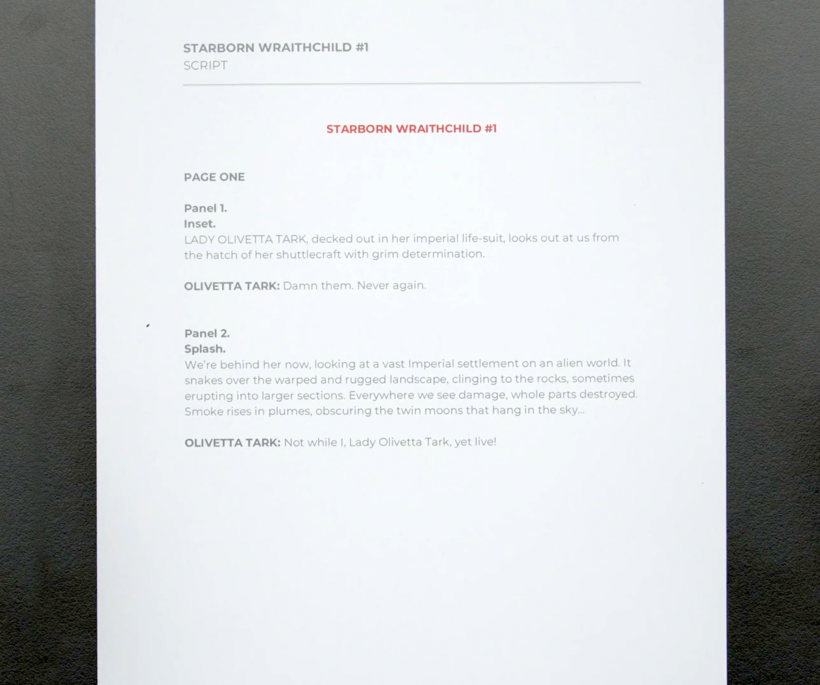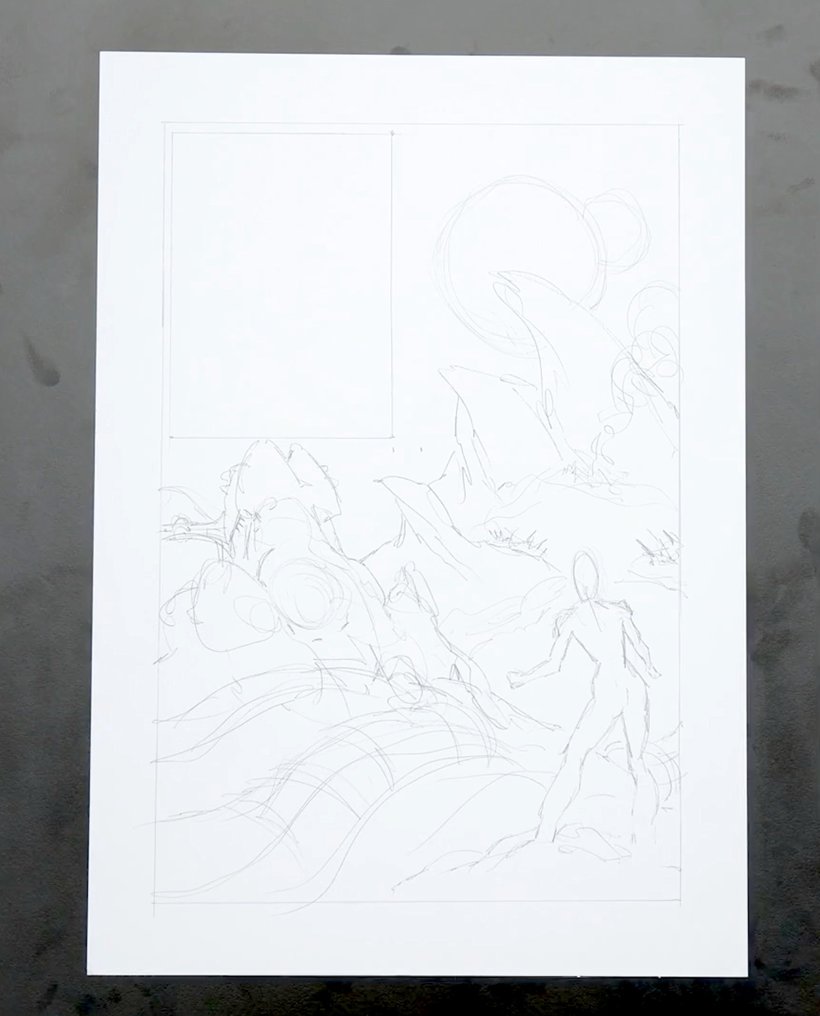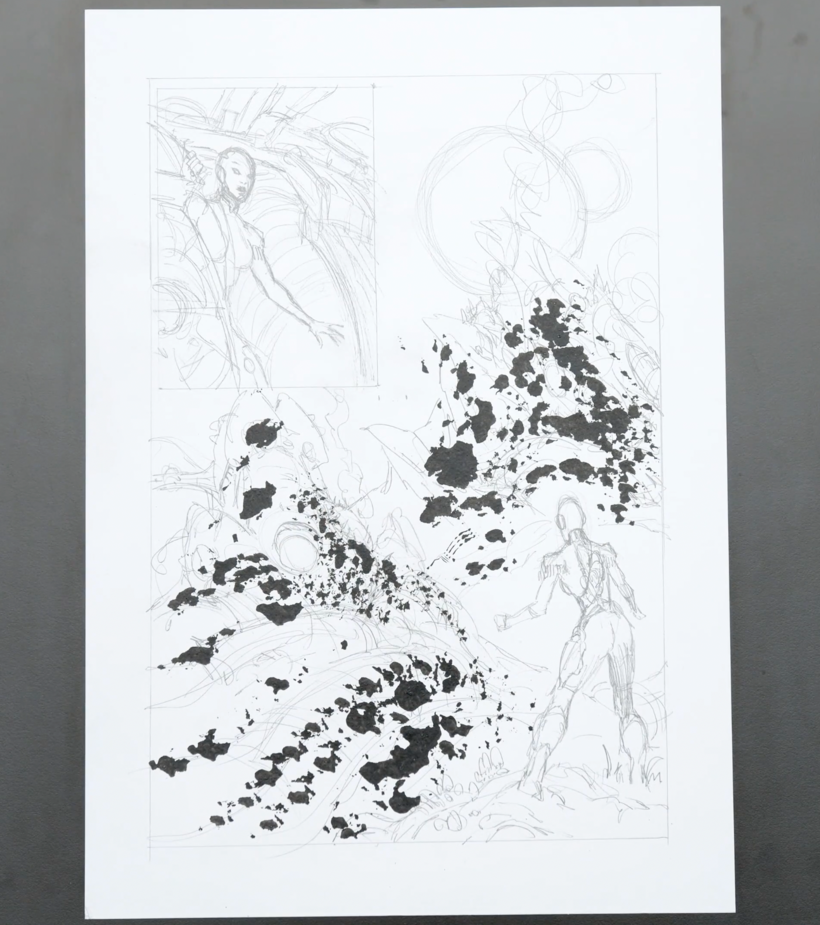Imaginary Worldbuilding for Comic Book Drawing
Course final project
A course by Liam Sharp , Writer and Illustrator
Joined September 2020
About the final project for: Imaginary Worldbuilding for Comic Book Drawing
World building for comic books
“Congratulations! You have reached the end of this Domestika course. It has been a genuine joy sharing my knowledge and experience with you. Thank you so much. I sincerely hope you have enjoyed the course. Now before we end, I’d like to remind you of some of the most important steps we gave throughout the course and that you should remember when you start doing your final project: Analyze the Script Remember, the first step was to break down and analyze the script. Keep in mind the technical information regarding panels, insets, and dialogue. But most importantly, read the script looking for clues to create a world that enriches the story you are helping to tell. Often comic book scripts won’t offer you much detail regarding the environment, so the art of world-building is all about breathing life into that particular aspect by using a lot of detail and texture, and my thinking about the specific details that make a working world – from rock types to vegetation. Be imaginative, and push yourself to enrich the world you are creating.





Partial transcription of the video
“Final Project Hi, and thank you for joining me on this course. I learned the most amazing lessons about world-building from my mentor, Don Lawrence. Since then, I have spent many years refining them and developing my own techniques for creating interesting worlds and environments for comic books. For the final project, I want you to create a splash page with an inset based on any of the three scripts that I provided. For that, the first step was to break down and analyse the script. Keep in mind the technical information regarding panels, insets, and dialogue, but most importantly, read the...”
This transcript is automatically generated, so it may contain mistakes.
Course summary for: Imaginary Worldbuilding for Comic Book Drawing
-
Category
Illustration -
Software
Adobe Photoshop -
Areas
Digital Illustration, Drawing, Ink Illustration, Pencil Drawing, Traditional illustration

Liam Sharp
A course by Liam Sharp
Liam Sharp is an award-winning British comic book artist, writer, publisher, and co-founder of Madefire Inc. He’s worked with major comic companies, from Marvel, DarkHorse, Image, and DC. Liam has also created his own comics, titled Starhenge.
He’s drawn the Hulk, Spider-man, Venom, Spawn, and more recently the best-selling Wonder Woman Rebirth series, The Lies and The Truth. He also illustrated an issue of The Justice League, a Dark Knight Metal tie-in, and the acclaimed The Brave and the Bold: Batman and Wonder Woman series, which he also wrote. Liam recently finished a 24-issue illustration of The Green Lantern,, and Batman: Reptilian for DC's Black Label imprint.
- 100% positive reviews (48)
- 2,297 students
- 18 lessons (4h 0m)
- 18 additional resources (8 files)
- Online and at your own pace
- Available on the app
- Audio: English
- English · Spanish · Portuguese · German · French · Italian · Polish · Dutch
- Level: Beginner
- Unlimited access forever

